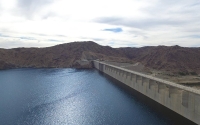
Dams in the Kingdom of Saudi Arabia are an important source of water for developing population centers and agricultural areas adjacent to valley paths. The storage capacity of dams in the Kingdom is estimated at about 2.4 billion m³ of exploitable water. The number of dams in the Kingdom is 559, according to the annual report of the Ministry of Environment, Water, and Agriculture for 2023 . Among the largest of these dams are: King Fahd Dam Located in Bishah Governorate , Aseer Province , ...
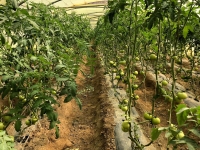
Organic Agriculture in the Kingdom of Saudi Arabia is an agricultural practice that relies on the use of natural materials to produce food in the Kingdom of Saudi Arabia without the use of chemicals, fertilizers, pesticides, hormones, or genetically modified materials. The total organic agriculture production reached approximately 95,389 t in 2023. Organic products, including fresh produce, grains, or canned goods, are identified by the Saudi National Organic Products Label, which indicates tha...
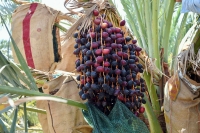
The Kingdom of Saudi Arabia produces various varieties of dates , accounting for 17 percent of the global date production, which is approximately 9.7 million t. The number of palm trees in the Kingdom reached thirty-four million, producing around three hundred varieties of dates. These include Sukkari, Khalas, Ajwa, Sagai , and Sufri , with a total production of 1.6 million t annually as of 2023. Among the date varities in the Kingdom are: - Sagai: A variety widely cultivated in Riyadh Province...
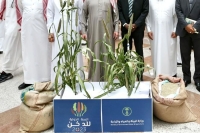
Millet Cultivation in the Kingdom of Saudi Arabia refers to the cultivation of millet seeds across large areas in the western and southern regions of the Kingdom. Its cultivation covers the area from al-Madinah al-Munawwarah in the north to the Kingdom's southern borders. Its cultivation is limited to the provinces of Aseer , Jazan , al-Bahah , Makkah al-Mukarramah , and al-Madinah al-Munawwarah . Millet is suited for local expansion. It can withstand harsh climatic conditions. It co...
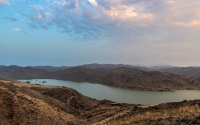
Wadi al-Ahsaba Dam is a soil dam and one of the water courses in the Kingdom of Saudi Arabia . It was launched in 2012 and is located in al-Mikhwah Governorate in al-Bahah Province . Wadi al-Ahsaba Dam features The length of Wadi al-Ahsaba Dam stands at 895 m, with a height of twenty-two m. A maximum water storage capacity of eleven million m³ was achieved during the construction phase. It supplies water to nearly fifteen wells situated behind the dam, serving as a primary source of drinking w...
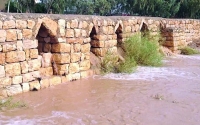
Al-Sabeen Dam is one of the oldest and most prominent landmarks of Rawdat Sudair, located northwest of Riyadh , the capital of the Kingdom of Saudi Arabia . It is over four centuries old, and its remnants still exist. It consists of seventy outlets through which excess water flows above the flood level in Sudair. Al-Sabeen Dam construction The construction of this historical dam dates back to 1647, and it has been a source of numerous benefits for the people of Rawdat Sudair throughout history....
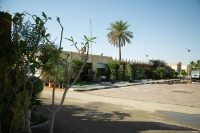
Nurseries in the Kingdom of Saudi Arabia are agricultural complexes dedicated to producing and cultivating seedlings across the provinces of the Kingdom . They contribute to afforestation efforts by meeting future demands for locally produced plants, such as ornamental flowers, shrubs, annuals, ground covers, cacti, and plant hedges. Importance of nurseries in Saudi Arabia Nurseries in the Kingdom contribute to supplying public facilities, homes, and gardens with trees such as almonds, ornament...
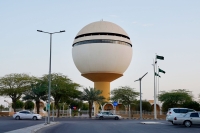
Buraydah Water Tower is a water reservoir and a landmark in Buraydah City , the headquarters of the Emirate of Qassim Province in the heart of the Kingdom of Saudi Arabia . It offers panoramic views of Buraydah City’s landmarks, palm farms, and orchards and serves as a venue for national celebrations and events. Specifications of Buraydah Water Tower Buraydah Water Tower rises sixty-six m above ground level and is designed in the shape of a golf ball, with approximately 60 percent of its stru...
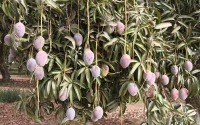
In 2022, the number of mango trees in Jazan Province was around one million trees divided among 19,109 farms at an annual production rate of about sixty-five thousand t, part of which is exported to international markets. Sabya Governorate hosts one of the biggest mango farms with more than thirty thousand trees and an annual production rate of more than six hundred t. This province is increasing the number of trees and farms, improving the agricultural rural sector, and boosting mango cultivat...
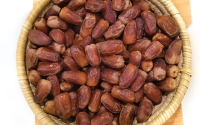
Sagai Dates are among the local varieties of dates. They are grown in al-Aarid neighborhood surrounding Riyadh in the Kingdom of Saudi Arabia . They ripen in the middle of the agricultural season and are mostly expensive. They can be eaten fresh or dried. Characteristics of Sagai Dates SagaiDates are rectangular and oval. They are thick with a yellowish tip that is inverted outward. They feature flat reddish edges. In general, the fruit is light yellow. However, when it grows into dates, t...

The Anbara Date is one of the varieties of dates that is famously cultivated in al-Madinah al-Munawwarah , located in the western part of the Kingdom of Saudi Arabia . It has a medium yield and matures late. Its shape is typically rectangular, and it's consumed as a date. Anbara Dates cultivation The Anbara yield is considered one of the rare palm yields in the Kingdom, and it is cultivated in limited quantities due to its unsuccessful planting, the high cost of its seedlings, and its low ...
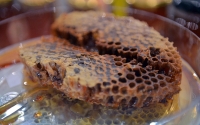
Apiaries in the Kingdom of Saudi Arabia are sites designated for beekeeping and care in the Kingdom under the supervision of the Ministry of Environment, Water, and Agriculture . The Kingdom’s diverse climate and topography create ideal conditions for beekeeping and year-round honey produced by the apiaries. Types of apiaries in Saudi Arabia Beekeepers in the Kingdom follow two beekeeping methods: Mobile apiaries and stationary apiaries. Furthermore, apiaries are classified into two types: Ho...